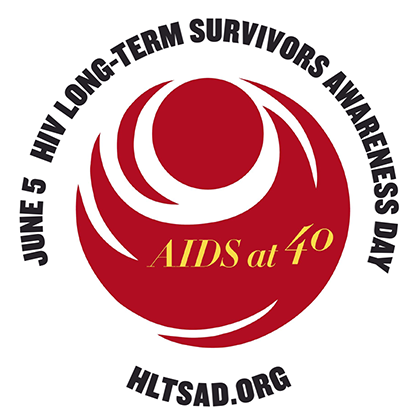Reflection on 40 Years of HIV/AIDS Research


On June 5th, the National Institutes of Health Office of AIDS Research (OAR) joins colleagues worldwide to commemorate the 40th anniversary of the landmark 1981 Centers for Disease Control and Prevention (CDC) Morbidity and Mortality Weekly Report(MMWR) that first recognized the syndrome of diseases later named AIDS. June 5th also marks HIV Long-term Survivors Awareness Day.
Over the past 40 years, HIV/AIDS has evolved from a fatal disease to a manageable chronic illness with treatment. This progress is attributable in large part to the nation’s longstanding HIV leadership and contributions at home and abroad through the National Institutes of Health (NIH), the Office of AIDS Research (OAR), the President’s Emergency Plan for AIDS Relief (PEPFAR) at the U.S. Department of State Office of the Global AIDS Coordinator, the Ending the HIV Epidemic in the U.S. initiative (EHE) at the U.S. Department of Health and Human Services. It is important to recognize the U.S. Department of State, the Department of Defense, the U.S. Agency for International Development (USAID), U.S. Army Medical Research Institute of Infectious Diseases (USAMRIID), the Centers for Disease Control and Prevention (CDC), and the U.S. Health Resources and Services Administration. The NIH, through its HIV Research Agenda, has contributions from the National Institute of Allergy and Infectious Diseases plus most of the Institutes, Centers, and Offices that receive HIV funding. The U.S. HIV/AIDS efforts continue as whole of government approach with international partners to overcome barriers to end the pandemic.
The NIH remains committed to supporting basic, clinical, and translational research to develop cutting-edge solutions for the ongoing challenges of the HIV epidemic. The scientific community has achieved groundbreaking advances in the understanding of basic virology, human immunology, and HIV pathogenesis, and has led the development of safe, effective antiretroviral medications and effective interventions to prevent HIV acquisition and transmission. Nevertheless, HIV remains a serious public health issue.
The OAR was established in 1988 to ensure that NIH HIV/AIDS research funding is directed at the highest priority research areas and to facilitate maximum return on the investment. OAR’s mission is accomplished in partnership within the NIH through the Institutes, Centers, and Offices (ICOs) that plan and implement specific HIV programs or projects, coordinated by the NIH HIV/AIDS Executive Committee. As I reflect on our advancements over the years (see the Progress Against HIV/AIDS Timeline on the OAR website), I would like to note the collaboration, cooperation, innovation, and other activities across the NIH ICOs in accelerating HIV/AIDS research.
Key scientific advances using novel methods and technologies have emerged in the priority areas of the NIH HIV research portfolio. Many of these advances derive from NIH-funded efforts, and all point to important directions for the NIH HIV research agenda in the coming years, particularly in the areas of new formulations of current drugs, new delivery systems, dual use of drugs for treatment and prevention, and new classes of drugs with novel strategies to treat viruses with resistance to current drug regimens.
Further development of long-lasting HIV prevention measures and treatments remains at the forefront of the NIH research portfolio on HIV/AIDS research. NIH-funded investigators continue to uncover new details about the virus life cycle, which is crucial for the development of next generation HIV treatment approaches. Additionally, the NIH is focused on developing novel diagnostics to detect the virus as early as possible after infection.
Results in the next two years from ongoing NIH-supported HIV clinical trials will have vital implications for HIV prevention, treatment, and cure strategies going forward. For example, two NIH-funded clinical trials for HIV vaccines, Imbokodo and Mosaico, are evaluating an experimental HIV vaccine regimen designed to protect against a wide variety of global HIV strains. These studies comprise a crucial component of the NIH’s efforts to end the HIV/AIDS epidemic.
As we close on four decades of research, I look forward to the new advances aimed at prevention and treatment in the years to come. To learn more about the OAR and how it catalyzes the NIH HIV/AIDS research investment, please visit the OAR website.
Maureen M. Goodenow, Ph.D.
Associate Director for AIDS Research and
Director, Office of AIDS Research
National Institutes of Health
This page last reviewed on December 10, 2024

